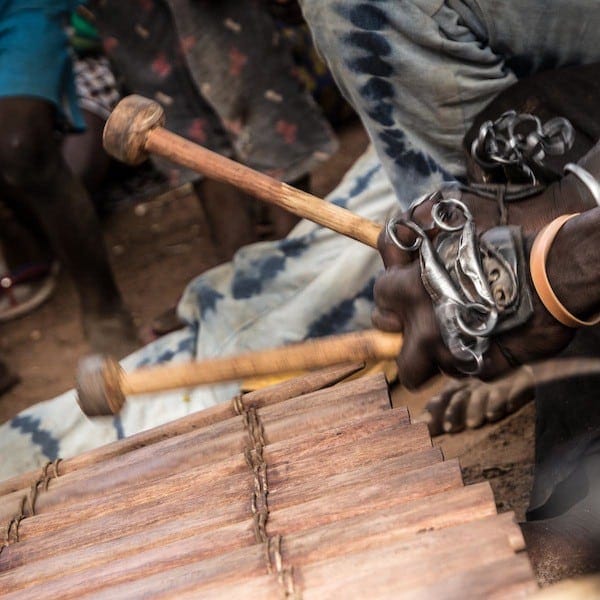Burial in Karankasso

On September the 9th, 2011 old Fie-Sini Traoré died. He was buried in his courtyard, lots of people were there to dig the grave and hunters shoot their shotguns in the air, to honour the deceased. Here, when an old men dies, his burial is a happy celebration. He lived a long life and left sons and daughters, so everybody celebrates with millet beer and music. On the other hand, if a young man or woman dies, the atmosphere is very different. No music, sad faces. This kind of burial can be frequent here, especially in this rainy period when mosquitoes bring malaria. As I stay in Karankasso I’ll hear almost every day of somebody dying.
Funerals, on the other hand, are all concentrated on a single day of the dry season, usually in March. At both funerals and burials the baan, the Sambla xylophone, is present with its three players, who in Karankasso belong to the Konaté family. Among the Sambla it is often accompanied by the longa, a hourglass-shaped talking drum. I was at the celebration because the deceased’s sons are friends of the person who is introducing me to the local hunting association, Lasso Traoré. It was beautiful to see, while I was recording sitting next to the baan, the sons of the dead man dancing, drunk and happy with the crowd. I thought I wish my funeral could be like this, with the same atmosphere and wonderful music, with no regrets.
Musicians: Baan solo: Sa-Lamini Konaté; Bass: Si-Goni Konaté; Accompaniment: Togo-Nindja Konaté. Longa: Si-Ti and Si-Si Traoré.
For more information on baan music, see Julie Strand’s PhD thesis at Wesleyan University.
